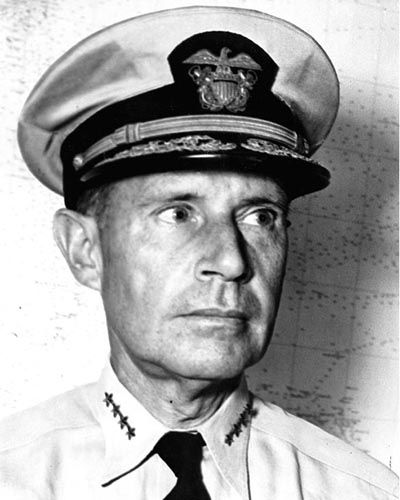Raymond A. Spruance gets plaudits for what he did at the Battle of Midway. And deservedly so, since he won the battle while outnumbered and against a very capable foe.
But he arguably pulled off a much more incredible feat of arms two years after Midway, when the U.S. Fifth Fleet appeared off the Mariana Islands.
When the Japanese learned the Americans were off the Aleutians, they sent their fleet — a much larger force than Spruance faced at Midway, including nine carriers with 430 aircraft, escorted by a powerful force of surface combatants. Japan also had planes based on the Marianas.

To protect the transports, Spruance had to operate west of the Marianas. His 15 carriers were equipped with the F6F Hellcat, a plane designed with lessons from combat against the Mitsubishi A6M Zero in mind (of course, finding a nearly-intact Zero on Akutan Island didn’t hurt).
According to CombinedFleet.com, Japanese admiral Jisaburo Ozawa planned to use the Japanese bases on the Mariana Islands to hit the Americans from long range — essentially shuttling his planes back and forth between the islands and the carriers. He was dealing with pilots who were very inexperienced after nearly three years of war had devastated Japan’s pilots.

Spruance, though, had enough time to hit the land-based airfields first. Then he set his cruisers and battleships in a gun line ahead of his carriers. In essence, his plan was to use the advanced radar on his ships to first vector in the Hellcats. Then, the battleships and cruisers would further thin out the enemy planes.
Spruance’s plan would work almost to perfection. According to Samuel Eliot Morison in “New Guinea and the Marianas,” between 10:00 a.m. and 2:50 p.m., four major strikes totaling 326 planes came at Spruance’s fleet. Of those planes, 219 failed to return to their carriers. The Americans called it “The Marianas Turkey Shoot.”

The worst was yet to come. On June 19, American submarines sank the Japanese carriers Taiho and Shokaku. The next day, Spruance began his pursuit. Late in the evening of June 20 the Americans sent out a strike of their own with 226 aircraft. The attack would sink the Japanese carrier Hiyo and two oilers.
A Japanese log said it all: “Surviving carrier air power: 35 aircraft operational.”
Spruance had just won a devastating victory – perhaps the most one-sided in the Pacific Theater.


